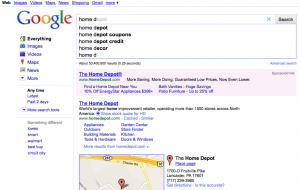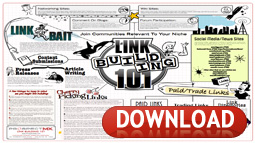Google Instant Search Explanation & Case Study
Google Instant Search Case Study and Explanation
We have had a tremendous amount of questions surrounding the topic of Google’s new instant search. Most of the questions seem to relate to expectations that the business executive should have on the impact of traffic and conversions.
Now that we’ve actually had a week and a half to monitor some phrases that we personally rank for and check the impact of instant search on those keyword phrases, we figured it it would be best to share them with our customers and, of course, you.
I don’t really have an opinion one way or the other about instant search. It’s almost like in some areas it will be a detriment and others a positive, so it’s almost a wash. But read below, and I’ll explain why.
How It Used To Be
Before instant search, the default by Google was to offer suggestions in a drop-down fashion as the user would type their query into the search input box. However, no results would be displayed until the user pushed enter or click the search button.
A good example, which we are using in this case study, is the phrase “home value”. As you would type “home value,” you would indeed see suggestions drop down. They would not be that great of an influence, but may give you a few good ideas.
How Google Instant Search Changes Search As We Know It
Google automatically displays the results for the phrase "home values" when a user may be trying to search for "home value."
Now, you’ll notice that by the time you get to the letter “v” in the phrase “home value,” Google has already displayed the searches for the plural term, “home values.” so, “what’s the big deal?” You ask. The big deal, for us anyway, is that our website doesn’t rank on the first page for that plural term. It does, however, rank for the singular term. So, if Google instant search is followed by the user 100% of the time, then we’d have just lost all of our organic traffic from Google for the term “home value.” In our case, this could literally mean hundreds of dollars every day in revenue.

In this "instant search," the user could be looking for a small business that sold home products and is then distracted by "Home Depot" all over the page along with maps, etc.
Let’s think about a small town hardware store named “Home Store.” Imagine yourself going to Google and searching for, “home store.” Once you type in the first “m,” you have Home Depot staring at you in the face along with a great shiny map. I believe, this small-town store may just lose some sales as a result of instant search.
I’m not stating an opinion one way or the other, only that it’s definitely something that needs to be thought about by the small business owner moving forward about the organic search (and paid search for that matter) marketing that is being done for an organization.
What Our Data Shows About Instant Search Surprised Me
My initial reaction when I saw that Google was automatically displaying the results for “home values,” as you were typing in the phrase “home value” was one of true despair. I assumed that having the results automatically appear for a different phrase would be so much of a distraction that people would automatically flock to them.
This is not what we found out in our data however. I go over this in great detail in the video above, but here is a synopsis.
- Google instant search was launched on September 8, 2010.
- We compared two different sets of data. Both datasets were individuals searching Google for the phrase “home value” who landed on our page that ranks for that term.
- In the national search results, we have consistently been ranked at number three during the entire time frame of our datasets.
- We compared Wednesday, August 25, 2010 through Sunday, September 5, 2010 to Wednesday, September 8, 2010 through September 19, 2010. This gave us an accurate day by day comparison, because search volumes vary greatly during different days of the week.
The results?

18.64% increase in search traffic from Google after instant search distracted users away from our tested phrase.
We found that even though users are defaulted to search results we do not appear in, we actually saw an increase in traffic from Google of 18.64%. To be honest, I can’t logically explain it.
One of the few things is happening. Either Google is showing different instant search results to different people, and the phrase “home value” is one of them or people are disabling Google instant search. The only other explanation would be that the results are simply being ignored. Maybe the average Google user, who doesn’t live in this stuff every day like we do, is almost seeing them as advertisements and doing what they want to do anyway.
We’ll see how this affects things in the future, but as for now… I’m not nearly as worried as I was 12 days ago.



 Target
Target
